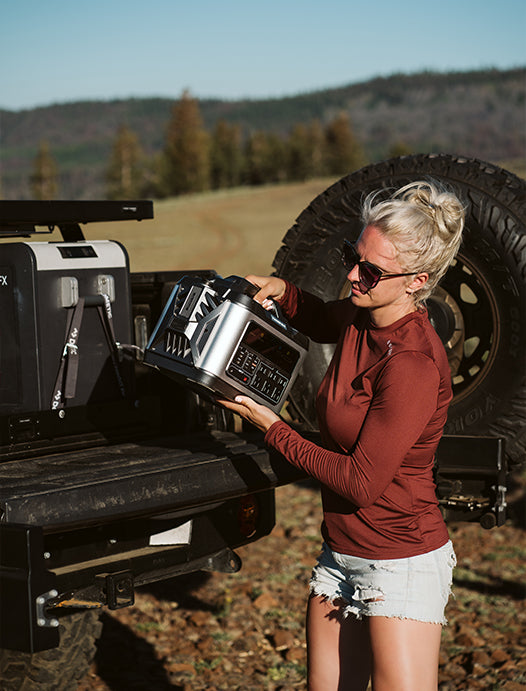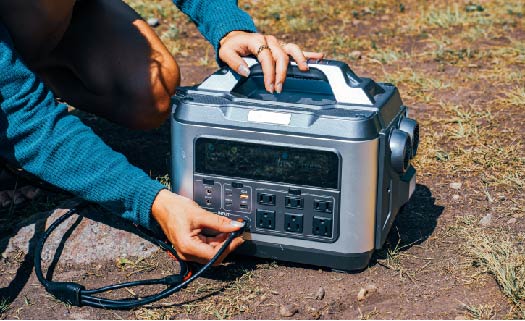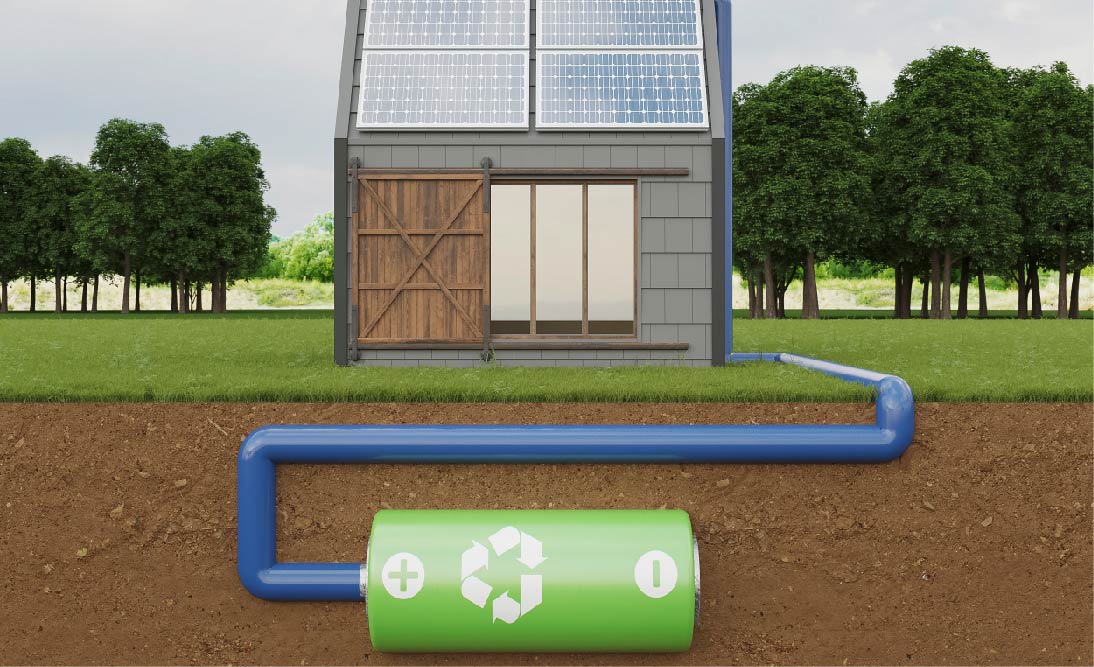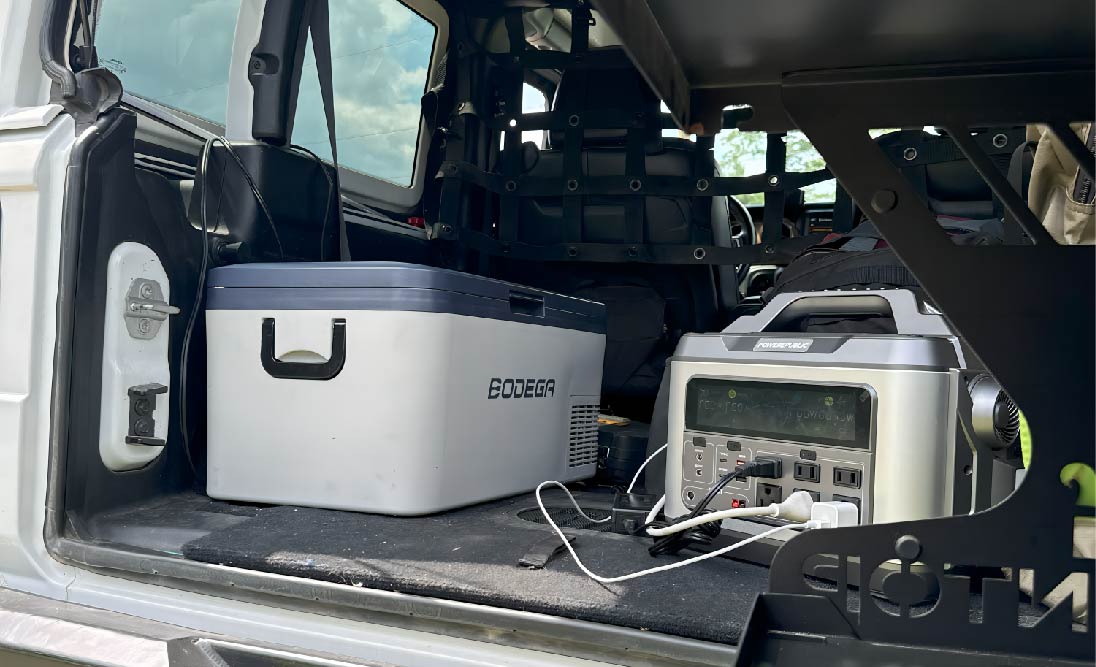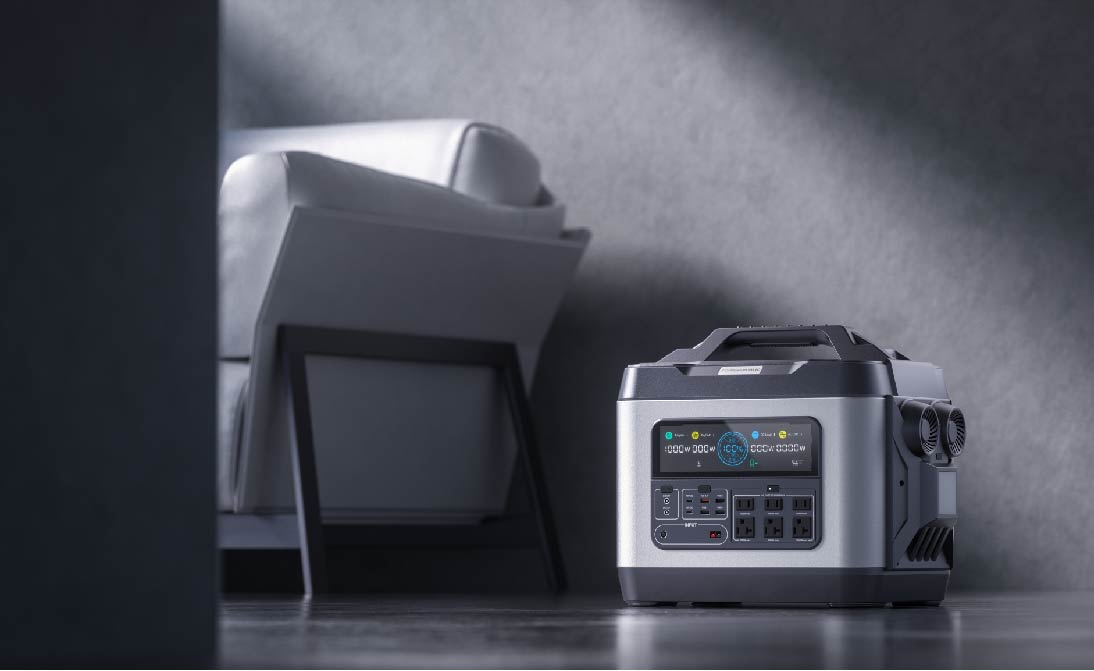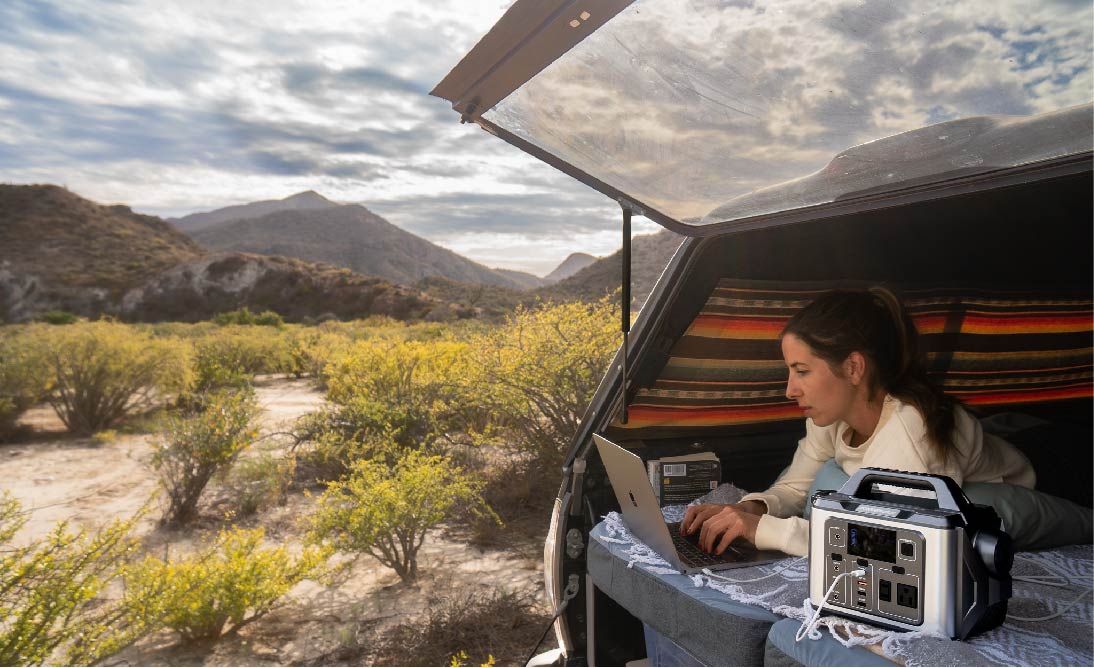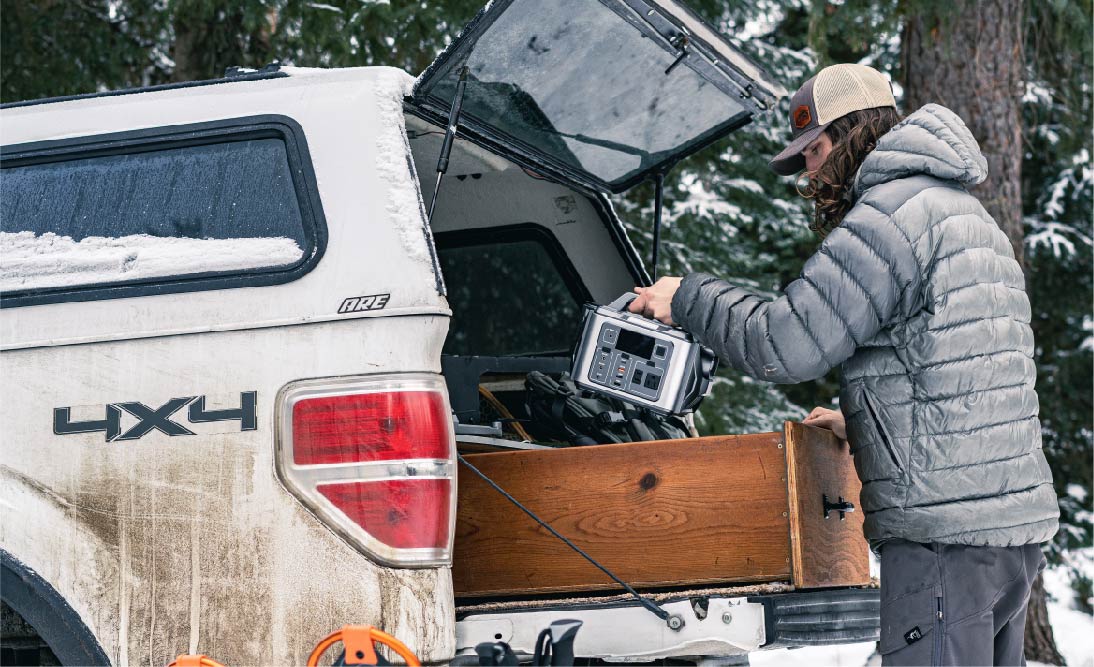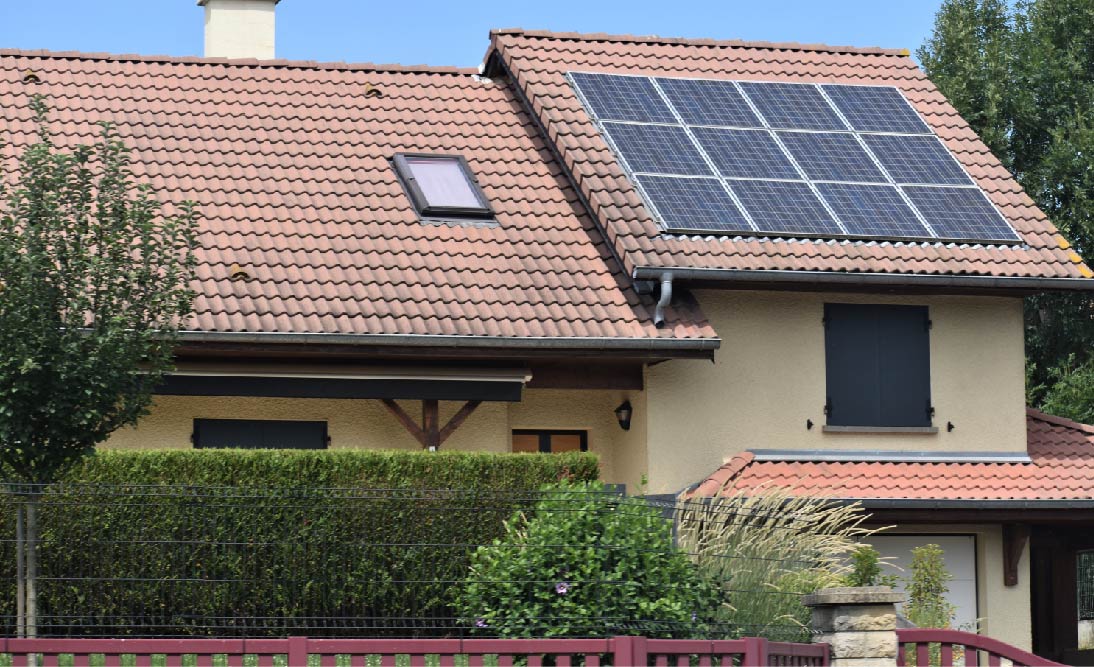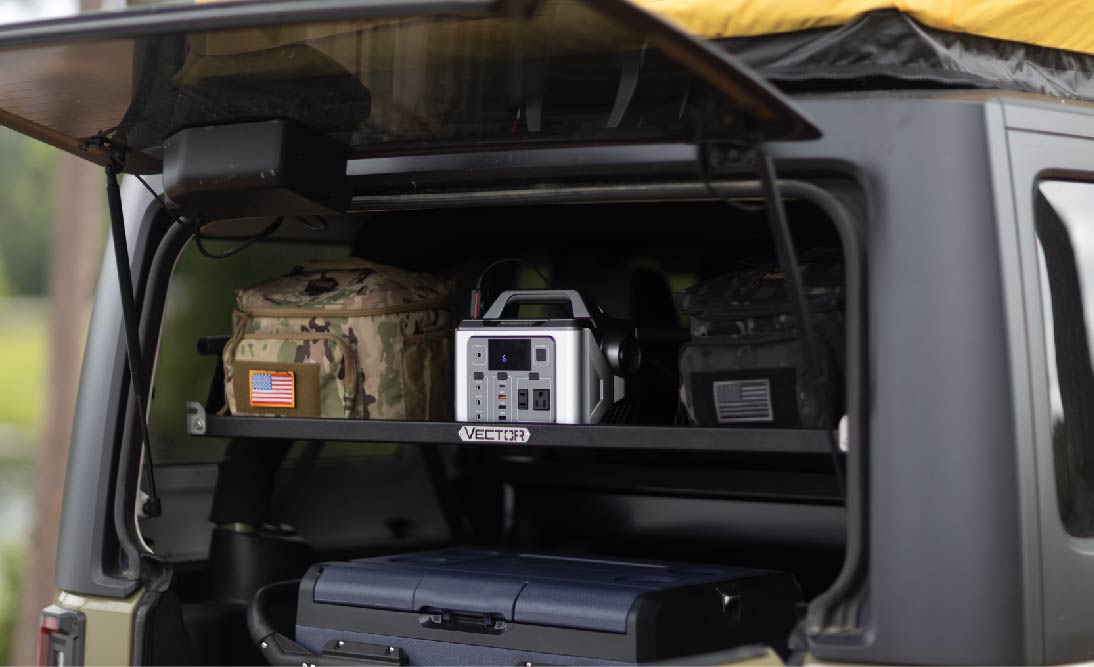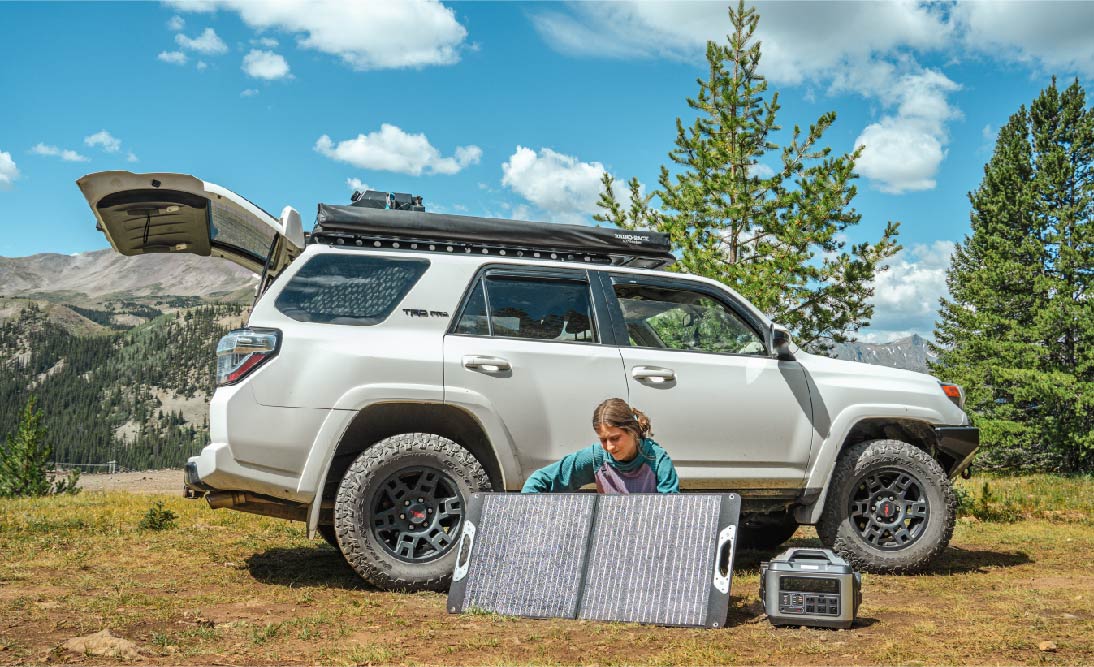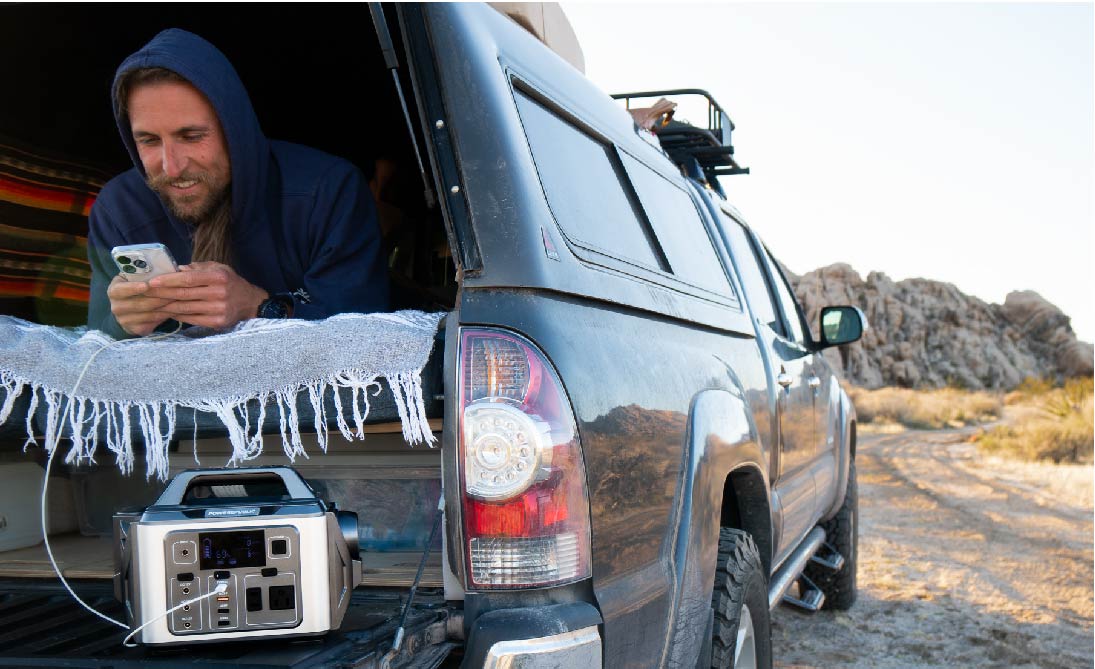Table of Contents:
-
Can Portable Power Stations or Portable Solar Generators Function Like Solar Battery Banks for Home?
-
Best Solar Battery Banks for Home: POWEREPUBLIC T2200 and T3000
-
FAQ II: How to Determine the Size of Portable Power Stations?
The best solar battery banks for homes are becoming an essential component for those seeking sustainable and efficient energy solutions. These solar battery banks serve as a reliable reservoir for the energy harnessed by solar panels, ensuring that homeowners can access power even when the sun isn't shining. They are instrumental in maintaining energy flow during night-time or on cloudy days when solar panels are less effective. While factors like capacity, brand, and technology significantly influence the cost, which can range from $5,000 to $15,000 or more, the long-term benefits of energy independence and reduced carbon footprint are undeniable.
For those exploring less permanent solutions or needing backup power for less demanding scenarios, POWEREPUBLIC offers robust alternatives like the T2200 and T3000 models. These portable power stations, compatible with solar panels, present a flexible and mobile solution for modern energy needs. In this guide, we are going to talk about every aspect of solar battery banks for home and guide you in picking the best solar battery banks for your home devices and appliances.
Solar Battery Banks For Home Overview
Solar battery banks for homes are an increasingly popular way to store energy, particularly for those utilizing solar panels. These systems allow homeowners to store excess solar energy generated during the day, used at night, or when the solar panels aren't producing enough electricity to meet demand.

What Are Solar Battery Banks for Home?
Solar battery banks are essentially a collection of batteries connected to a home solar power system. They store electrical energy generated by the solar panels for later use. This is particularly useful in residential settings where energy consumption can vary greatly between day and night.
How Do They Work?
The process is straightforward:
-
Energy Collection: Solar panels absorb sunlight and convert it into electrical energy.
-
Energy Storage: This energy is then directed to the solar battery bank, where it's stored as electrical energy.
-
Energy Use: When the solar panels are not producing electricity (like at night or on cloudy days), the stored energy in the battery bank can be used to power your home.
Price Range
The cost of solar battery banks can vary widely, depending on several factors like capacity, brand, and technology. Prices generally range from around $5,000 to $15,000 or more. It's important to note that prices can fluctuate due to technological advancements, market demand, and geographic location.
Knowing the basic knowledge can help you make better decisions on choosing the best solar battery banks for your home later. Solar battery banks for home use are a significant investment but can offer long-term savings and energy independence. They are particularly beneficial for those looking to maximize their use of renewable energy sources and reduce their carbon footprint.
Strengths and Limitations of Solar Battery Banks For Home
Solar battery banks for home offer a blend of benefits and challenges. They represent a significant step towards sustainable living and energy independence, but they require a careful consideration of costs, maintenance, and energy needs. When choosing the best solar battery banks for your home, it's important to weigh their pros and cons to make a decision that aligns with your power needs and budget constraints.

Strengths of Solar Battery Banks for Home
-
Energy Independence: Solar battery banks enhance energy self-sufficiency. For example, during a power outage, a home with a solar battery bank can continue functioning, unlike homes relying solely on the grid.
-
Maximized Solar Utilization: These systems enable homeowners to use almost all the energy their solar panels produce. Excess energy would go to the grid without a battery, often at a lower rate than what you pay for grid electricity. With a battery, this energy is saved for your use.
-
Environmental Benefits: By using renewable solar energy, these systems significantly reduce carbon emissions. For instance, a typical home solar system can reduce carbon emissions by 3-4 tons annually.
-
Cost Savings: While the initial cost (around $5,000 to $15,000) is significant, the best solar battery banks for your home can provide long-term financial savings. By reducing grid electricity usage, homeowners can save hundreds to thousands of dollars annually on their energy bills.
-
Demand Charge Reduction: For areas with demand charges or time-of-use rates, solar battery banks can save money by reducing peak-time grid energy usage.
Limitations of Solar Battery Banks for Home
-
High Initial Investment: The upfront cost is the main limitation. While prices are decreasing, the initial investment is still substantial for most homeowners.
-
Maintenance and Lifespan: Batteries have a limited lifespan and may require maintenance or replacement over time. For example, lithium-ion batteries typically last for about 10 to 15 years.
-
Size and Scalability: Homeowners must accurately estimate their energy needs to choose the right battery size. Underestimating can lead to insufficient power while overestimating results in unnecessary costs.
-
Energy Losses: There are inefficiencies in energy conversion and storage. For instance, about 5-10% of the energy can be lost during the charging and discharging process.
-
Dependency on Weather: Solar battery banks are less effective in areas with limited sunlight, and their efficiency can drop significantly during prolonged cloudy or rainy periods.
How to Find Out the Best Solar Battery Banks for Home?
Finding the best solar battery banks for your home requires careful evaluation of your energy needs, budget, and local conditions.
By analyzing factors like capacity, efficiency, lifespan, and cost, and considering the reliability of the manufacturer, you can choose a system that offers optimal performance and value. With the right solar battery bank, you can enhance your home's energy efficiency, reduce your carbon footprint, and enjoy greater energy independence.

Here’s a guide to help you make an informed decision:
-
Assess Your Energy Usage: Start by understanding your home's energy consumption. Look at your electricity bills to gauge your average daily kWh usage. For example, if your home uses 30 kWh per day, you'll want a battery system to store and supply a significant portion.
-
Battery Capacity and Power: Choose a battery with the right capacity (measured in kilowatt-hours, kWh) and power (measured in kilowatts, kW). The capacity tells you how much energy the battery can store, while power determines how much energy it can supply at any moment. For instance, a 10 kWh battery that can deliver 5 kW of power is suitable for a home that needs to run several appliances simultaneously.
-
Understand the Depth of Discharge (DoD): DoD refers to how much of the battery’s capacity can be used without affecting its lifespan. A battery with a higher DoD (e.g., 85%) means you can use more of its stored energy.
-
Efficiency Rating: Efficiency indicates how much energy put into the battery is available for use. If a battery has an efficiency of 85%, then for every 10 kWh of electricity put into it, 8.5 kWh is usable. Higher efficiency is better.
-
Battery Lifespan and Warranty: Check the lifespan, often measured in charge cycles, and the warranty of the battery. A quality solar battery might offer a 10-year warranty and last for 15 years or more.
-
Manufacturer Reputation and Reviews: Research brands and read reviews. Look for manufacturers with a strong reputation for reliability and customer service.
-
Compatibility with Solar PV System: Ensure the battery is compatible with your existing solar panel system. Some batteries work best with specific types of inverters or solar systems.
-
Cost and ROI Calculations: Consider the total cost, including installation and any additional equipment. Calculate the return on investment (ROI) by estimating how much you’ll save on your electricity bill. For example, if the system costs $10,000 and you save $1,000 per year on your electricity bill, the payback period is 10 years.
-
Local Incentives and Regulations: Research local incentives, rebates, or tax credits available for solar battery installations. Also, be aware of any local regulations or grid connection rules.
-
Environmental Conditions: Consider your local climate and environmental conditions. Some batteries perform better in certain temperatures and environments.
Can Portable Power Stations or Portable Solar Generators Function Like Solar Battery Banks for Home?
Yes! Portable power stations or portable solar generators can function similarly to solar battery banks for homes, but they have distinct limitations. Understanding them can help in deciding whether they can complement or serve as a substitute for the best solar battery banks for your home.

What are Portable Power Stations and Portable Solar Generators?
-
Portable Power Stations: These are compact, mobile units that store electrical energy in built-in batteries. They're typically charged via AC power, solar panels, or sometimes car chargers. They come in various sizes and capacities and are designed for portability and convenience, ideal for outdoor activities like camping or as a backup power source for small appliances during outages.
-
Portable Solar Generators: These are similar to portable power stations but are specifically designed to be charged by solar panels. They combine solar charging capability with battery storage, making them a renewable energy solution for off-grid power needs.
How Do They Work?
-
Charging: Both devices can be charged through solar panels, though this is more integral to the design of portable solar generators. They can also often be charged via wall outlets or car chargers.
-
Energy Storage and Use: Energy is stored in built-in batteries and can be used to power devices through various outputs (USB, AC outlets, etc.). The capacity and power output vary, but they are generally lower than permanent solar battery banks.
Price Range
-
The price range for portable power stations and solar generators varies widely based on capacity, features, and brand. Typically, they can cost anywhere from $100 to $2000 or more. The more powerful units, capable of running larger appliances, tend to be on the higher end of the price spectrum.
Comparison with Solar Battery Banks for Home
-
Capacity and Scalability: Solar battery banks for homes generally have a much higher capacity and can power an entire household. In contrast, portable units are designed for lower power needs.
-
Functionality: While portable units are versatile and mobile, home solar battery banks are integrated into your home's electrical system for seamless energy transition and larger-scale power management.
-
Cost-Effectiveness for Home Use: For continuous, daily home energy needs, solar battery banks are more cost-effective in the long run. Portable units are more for occasional, smaller-scale use.
-
Reliability: Solar battery banks are more reliable for long-term, continuous power supply compared to portable units which have limited capacity and require frequent recharging.
-
While portable power stations and solar generators can be valuable for temporary, small-scale power needs and offer great mobility, they don't typically provide the same level of power management and capacity as the best solar battery banks for your home.
For those looking to significantly reduce their reliance on grid power, enhance energy independence, and utilize a larger share of their solar generation, a dedicated home solar battery bank is a more suitable and efficient choice. However, portable units can be a complementary solution for specific needs like travel, and outdoor activities, or as an emergency backup for critical small appliances.
Best Solar Battery Banks for Home: POWEREPUBLIC T2200 and T3000
Portable power stations and solar generators are useful for temporary, small-scale power needs and offer great mobility, making them some of the best solar battery banks for home use during power outages that last a couple of hours. However, if the power outages last for days or if you need continuous power to run heavy-duty home appliances, portable power stations, and portable solar generators may not be suitable.

For those of you searching for the best solar battery banks for less demanding scenarios, consider the POWEREPUBLIC T2200 or T3000 models. Both are powerful backup power solutions, compatible with solar panels, and can work independently. To better evaluate the functionality and versatility of the T2200 and T3000, refer to the table below for important specs that make them stand out.
|
Feature/Model |
||
|
Capacity |
2240Wh/100,000mAh |
3200Wh/125,000mAh |
|
Continuous Power |
2200W |
3000W |
|
Starting Power |
4500W |
6000W |
|
Battery Type |
LiFePO4 Batteries(3000+ cycles) |
LiFePO4 Batteries(3000+ cycles) |
|
Number of Output Ports |
15 Output Ports |
15 Output Ports |
|
Charging Methods |
AC Adapter, Solar Panel, Car Charger |
AC Adapter, Solar Panel, Car Charger |
|
Solar Input |
230W |
230W |
|
Solar Compatibility |
POWEREPUBLIC Portable Solar Panels |
|
|
Weight |
64Ibs/30Kg |
88Ibs/40Kg |
|
Dimensions |
18.3*11.8*12.2 inch |
18.3*11.8*14.5 inch |
|
Duration(h) |
Duration(h)=Capacity(Wh) * 0.85 / The power of the item(W) |
|
|
TV (100W) |
19 hours |
27 hours |
|
Laptop (200W) |
9.5 hours |
13.5 hours |
|
Portable Fan (300W) |
6 hours |
9 hours |
|
Mini Fridge (400W) |
4.5 hours |
6.5 hours |
|
Electric Blanket (600W) |
3 hours |
4.5 hours |
|
Space Heater (1500W) |
1.3 hours |
1.8 hours |
|
Microwave Oven (1000W) |
2 hours |
2.5 hours |
|
Portable Air Conditioner (1500W) |
1.3 hours |
1.8 hours |
Note That:
-
The projected usage duration is based on the assumption of operating a single device at a time with the battery fully charged.
-
The power consumption of different appliances and devices may vary according to the brand.
-
It's essential to verify both the continuous and initial surge power requirements of your home appliances, as well as the capacity of the portable power station. Ensure that the combined operational and starting power demands of your appliances and devices do not exceed the output capability of the portable power station.
FAQ I: What’s the Lifespan of Portable Power Stations?
Answer: The lifespan of portable power stations primarily depends on the battery type and how it's used. Most high-quality power stations use lithium-ion or LiFePO4 batteries.

On average, these can last for about 500 to 2000 charge cycles. To put it into perspective, if you fully charge and discharge your power station once a week, it could last for approximately 10 to 38 years. However, real-world usage often includes partial discharges and recharges, which can extend the overall lifespan. It’s also important to note that battery capacity gradually decreases over time and with use.
FAQ II: How to Determine the Size of Portable Power Stations?
Answer: To determine the ideal size of a portable power station, consider the total wattage of the appliances and devices you intend to power.

Here's a step-by-step guide:
-
List Your Devices: Compile a list of the devices you plan to use with the power station (e.g., laptops, lights, fans).
-
Total Wattage Calculation: Add up the wattage of each device. For instance, if you want to power a TV (200W), a light bulb (10W), and a fan (50W), the total wattage required is 260W.
-
Include a Safety Margin: It's advisable to choose a power station with a higher wattage than your total calculation to account for power surges and to ensure the longevity of the station. In this case, a power station with at least 300W to 350W would be appropriate.
-
Consider Battery Capacity: Look at the power station's capacity (measured in watt-hours, Wh) to understand how long it can run your devices. For example, a 500Wh station could theoretically run a 250W load for 2 hours (500Wh divided by 250W).
-
Anticipate Future Needs: If you might expand your usage or add more devices in the future, consider getting a power station with a little extra capacity than your current calculation.
FAQ III: Can a Solar Battery Bank Power an Entire House?
Answer: Yes, a solar battery bank can power an entire house, but the extent depends on the battery's capacity and your home's energy consumption.

Here’s an example calculation:
-
Estimate Daily Energy Usage: Assume an average American home uses about 30 kWh per day.
-
Solar Battery Bank Capacity: Consider a solar battery bank with a capacity of 40 kWh.
-
Daily Power Supply: This battery could theoretically power your home for slightly more than a day (40 kWh divided by 30 kWh per day) without solar recharging.
-
Solar Panel Recharging: If your solar panels generate enough energy to meet daily usage and recharge the battery, the system can sustain your home indefinitely. However, this depends on factors like sunlight availability and panel efficiency.
-
Sizing the System: To fully power a home, ensure the solar panel output plus battery capacity covers your daily energy usage. If your panels produce 20 kWh on an average day, and your home uses 30 kWh, a battery bank of at least 10 kWh is necessary to cover the shortfall.
The key to powering a home with a solar battery bank is to balance the daily energy usage with the combined energy production of your solar panels and the storage capacity of your battery bank.
Final Thoughts
In conclusion, solar battery banks for homes represent a significant advancement towards sustainable living and energy autonomy. They are crucial for those seeking to maximize renewable energy usage and minimize carbon emissions, while also offering potential long-term financial savings. When choosing the best solar battery banks for your home, it's essential to consider factors like capacity, efficiency, and compatibility with your solar PV system. While the upfront cost can be substantial, the long-term benefits of energy independence and reduced utility bills are considerable.
For less demanding power needs or as a supplementary solution, products like POWEREPUBLIC's T2200 and T3000 models offer reliable, portable alternatives. These units are especially useful during shorter power outages or for outdoor activities, providing a versatile power solution that complements the best solar battery banks for your home. With careful selection and proper sizing, homeowners can effectively meet their energy needs while contributing to a more sustainable future.
Discover more about POWEREPUBLIC Portable Power Stations and Solar Generator Kits
